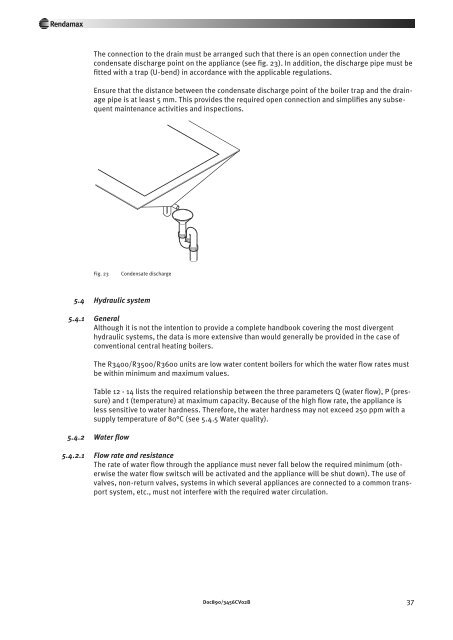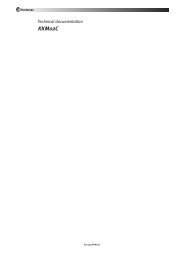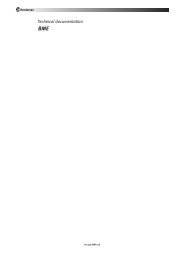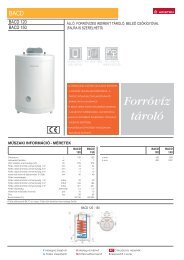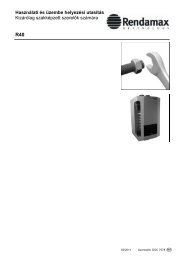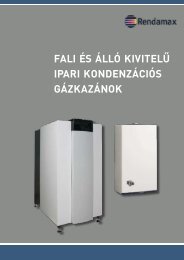R3400 Technical data - Rendamax
R3400 Technical data - Rendamax
R3400 Technical data - Rendamax
You also want an ePaper? Increase the reach of your titles
YUMPU automatically turns print PDFs into web optimized ePapers that Google loves.
<strong>Rendamax</strong><br />
The connection to the drain must be arranged such that there is an open connection under the<br />
condensate discharge point on the appliance (see fig. 23). In addition, the discharge pipe must be<br />
fitted with a trap (U-bend) in accordance with the applicable regulations.<br />
Ensure that the distance between the condensate discharge point of the boiler trap and the drainage<br />
pipe is at least 5 mm. This provides the required open connection and simplifies any subsequent<br />
maintenance activities and inspections.<br />
Fig. 23<br />
Condensate discharge<br />
5.4 Hydraulic system<br />
5.4.1 General<br />
Although it is not the intention to provide a complete handbook covering the most divergent<br />
hydraulic systems, the <strong>data</strong> is more extensive than would generally be provided in the case of<br />
conventional central heating boilers.<br />
The <strong>R3400</strong>/R3500/R3600 units are low water content boilers for which the water flow rates must<br />
be within minimum and maxi mum values.<br />
Table 12 - 14 lists the required relationship between the three parameters Q (water flow), P (pressure)<br />
and t (temperature) at maximum capacity. Because of the high flow rate, the appli ance is<br />
less sensitive to water hardness. Therefore, the water hardness may not exceed 250 ppm with a<br />
supply temperature of 80°C (see 5.4.5 Water quality).<br />
5.4.2 Water flow<br />
5.4.2.1 Flow rate and resistance<br />
The rate of water flow through the appliance must never fall below the required minimum (otherwise<br />
the water flow switsch will be activated and the appliance will be shut down). The use of<br />
valves, non-return valves, systems in which several appli ances are connected to a common transport<br />
system, etc., must not interfere with the required water circulation.<br />
Doc890/3456CV02B 37


